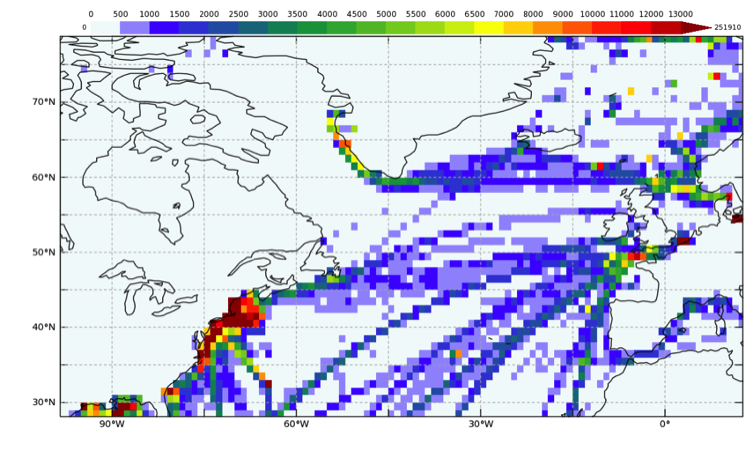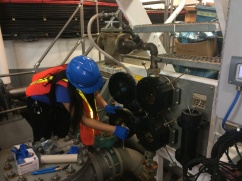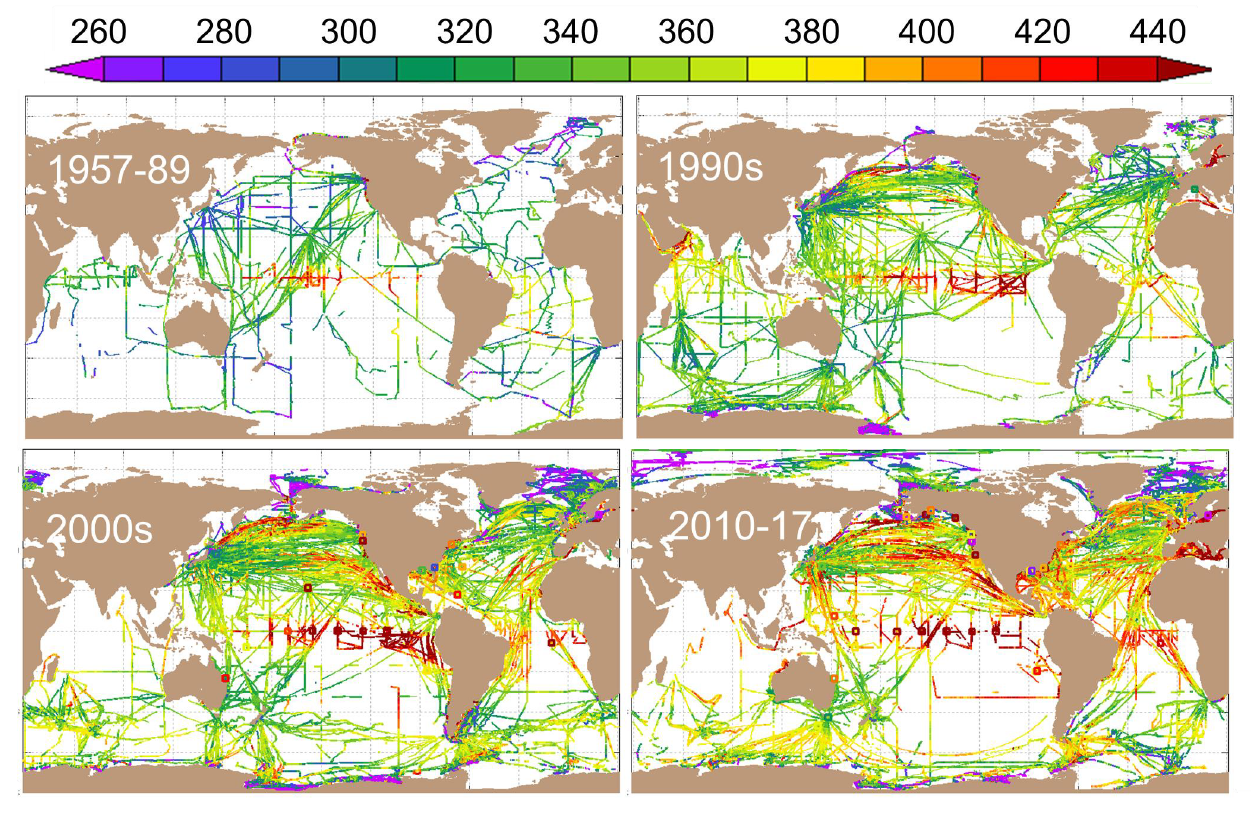Dalhousie Ship of Opportunity Program
Commercial vessels make regular transits on the ocean and may offer an excellent opportunity to collect important scientific data. The goal of this project is to equip commercial vessels with observational equipment and leverage existing routes to gain additional data without the need for dedicated science vessels, allowing for increased coverage, frequency, repeatability, duration, and convenience.
Background and Scientific Merit of SOOP Program:
According to the Surface Ocean COā Atlas (SOCAT, ), the amount of surface ocean oceanographic data has significantly increased since 1957. Currently, the latest version of SOCAT has 23.4 million quality-controlled observations of surface water partial pressure or fugacity of CO2, measured between the period of 1957 and 2017. A considerable contribution to the increased observations is from the rising numbers of underway systems on SOOP.Ā SOOP program uses existing infrastructure (a ship) as a platform for making oceanographic measurements. By using commercial vessels, such as container ships, supply vessels, ferries, fishing boats, trawlers, that make regular transits, we can collect scientific data without the additional demand of a scientific cruise.
Global distribution of surface water fCO2 measurements,Ā in Āµatm (SOCAT version 5)
Custom oceanographic equipment is installed onboard to convert the vessel into an independent observing platform. Using the seawater intake system of a ship, we can measure the physical, chemical, and biological properties of the in-situ water samples. This provides us with a key platform for supporting measurements, e.g. the air-sea CO2 partial pressure difference (ĪpCO2) which, in turn, helps to constrain global assessments of CO2 sources and sinks in the ocean.

Number of fCO2 observations in Northwest Atlantic (SOCAT version 6)
Our understanding of the carbon sink in the North Atlantic Ocean is still limited by the lack of scientific data, particularly in the Labrador Sea and Northwest Passage. Both locations play an important role in the ocean carbon sink. The insufficient data in the Northwest Atlantic is due to the lack of transits and the technical challenges of underway system installation.
Commonly used underway systems on SOOP are highly dependent on manual supervisions by trained technicians because of the complexity of the biogeochemical measurement system. The installation certification, as required by marine classification societies, could be difficult to obtain due to the technical issues faced by the conventional measurement system. Both factors might hinder the widespread use of SOOP in the future.
The new autonomous instrumentation can minimize the reliance on the frequent maintenance, and at the same time, maintain the quality of observation. As the potential of SOOP is growing, better instrumentation is needed to equip these ships for higher efficiency. The CERC.Ocean team has been working on the development of a compact, modular, low maintenance Dalhousie Underway Monitoring System (Dal-SOOP) in order toĀ overcome the technical challenges of autonomous measurements on SOOP.



